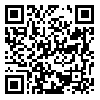Volume 6, Issue 4 (3-2019)
CPJ 2019, 6(4): 25-34 |
Back to browse issues page
Download citation:
BibTeX | RIS | EndNote | Medlars | ProCite | Reference Manager | RefWorks
Send citation to:



BibTeX | RIS | EndNote | Medlars | ProCite | Reference Manager | RefWorks
Send citation to:
Moradi A, Bagheri M, Hassani Abharian P. Bilingualism, Dyslexia, Transcranial Direct Current Stimulation (tDCS), Computational cognitive rehabilitation, Speed of processing, Working memory. CPJ 2019; 6 (4) :25-34
URL: http://jcp.khu.ac.ir/article-1-3037-en.html
URL: http://jcp.khu.ac.ir/article-1-3037-en.html
Kharazmi university , moradi 90@yahoo.com
Abstract: (9518 Views)
The aim of this research was to determine the effectiveness of tDCS and cognitive rehabilitation of working memory and the combination of these two methods on speed of processing and symptoms of dyslexia on bilingual children. Research method; semi experimental (pre-test, post-test and control group). Research population included all of the bilingual children at both sex at the age of 7-11 in Tehran and Kahrizak cities. Available samples were selected through Wexler intelligent questionnaire and Nama dyslexia test scores, so that 40 dyslexic students (based on school diagnostic system) and situated randomly in 4 groups: a) intervention by tDCS brain stimulation, b) computational cognitive rehabilitation via working memory module of RehaCom, c) simultaneous intervention of computational cognitive rehabilitation and brain stimulation tDCS and d) control group. Nama and speed of processing (SDMT) tests have been performed on all of the four groups in pre-test and post-test in order to data collecting. Data analysis results using analysis of multi-variable covariance in SPSS-22 showed that mentioned interventions could have meaningful changes in speed of processing and in decreasing dyslexia symptoms. Post hoc test results also showed that combination method first of all and then brain stimulation method have been the most effectiveness, but the mere computational cognitive rehabilitation method has not been influenced on these two variables alone.
Keywords: Bilingualism, Dyslexia, Transcranial Direct Current Stimulation (tDCS), Computational cognitive rehabilitation, Speed of processing, Working memory
Type of Study: Applicable |
Subject:
Special
Received: 2018/12/30 | Accepted: 2019/02/5 | Published: 2020/02/3
Received: 2018/12/30 | Accepted: 2019/02/5 | Published: 2020/02/3
Send email to the article author
| Rights and permissions | |
 |
This work is licensed under a Creative Commons Attribution-NonCommercial 4.0 International License. |






